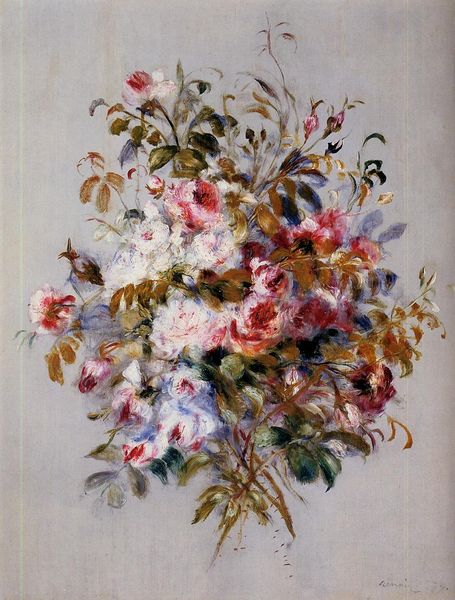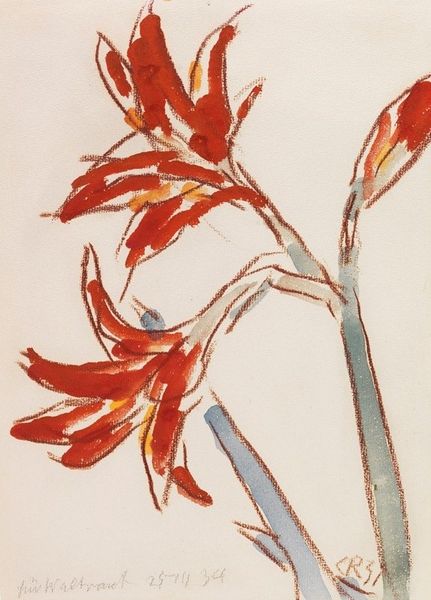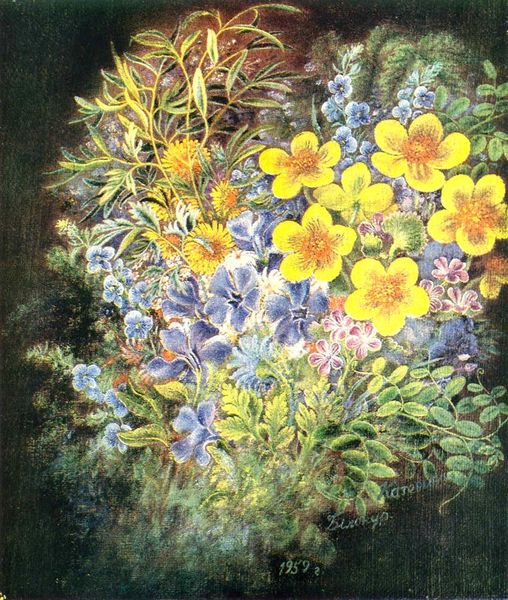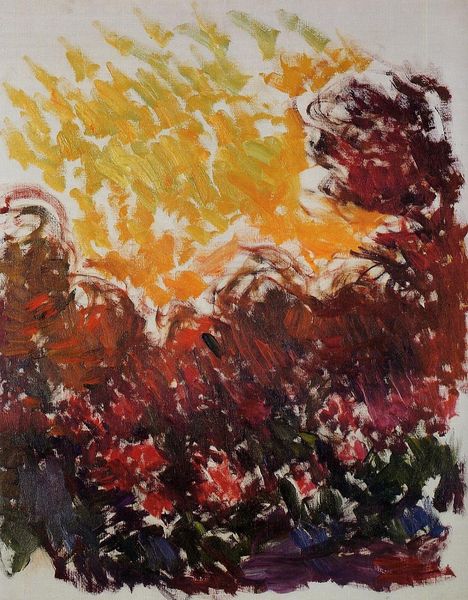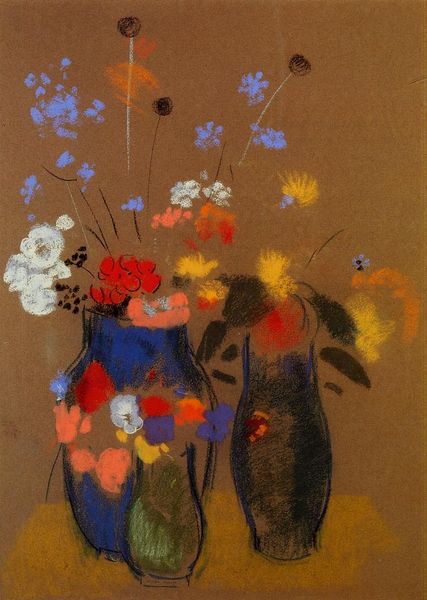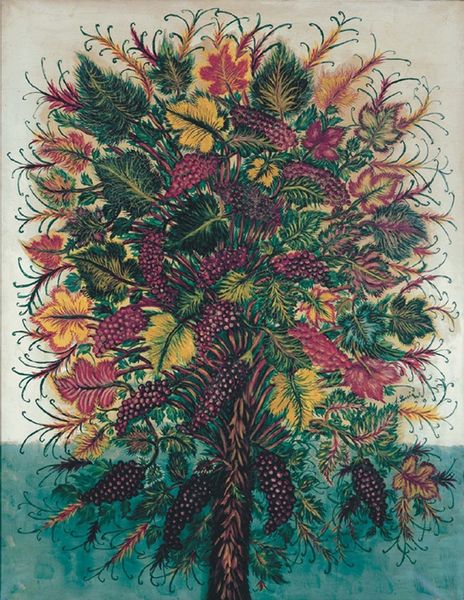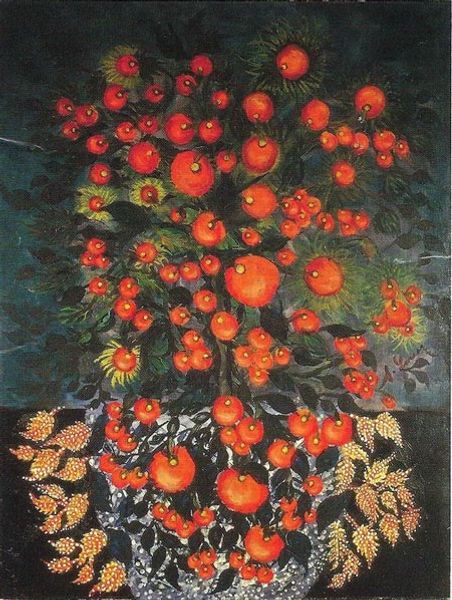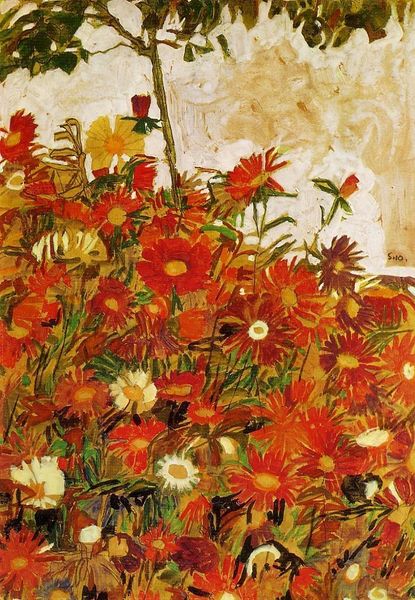
Copyright: Public domain
Pierre-Auguste Renoir created this oil painting, "Still Life with Fuscias," sometime in the late 19th or early 20th century. At first glance, this painting seems simply to depict flowers, but it speaks to the changing social and cultural values of France at the time. The Impressionists like Renoir were breaking away from the traditional art establishment, which favored historical and mythological scenes. Instead, they chose to paint everyday life and the natural world, reflecting a shift towards a more democratic and modern society. The loose brushstrokes and vibrant colors in this painting reflect the Impressionist focus on capturing the fleeting moment and the subjective experience of seeing. To understand this work more deeply, consider the rise of the middle class and the increasing interest in leisure and domestic life. Art historians consult exhibition records, biographies, and social histories to uncover the context of artworks like this. The creation and reception of art are always shaped by the society in which they exist.
Comments
No comments
Be the first to comment and join the conversation on the ultimate creative platform.
